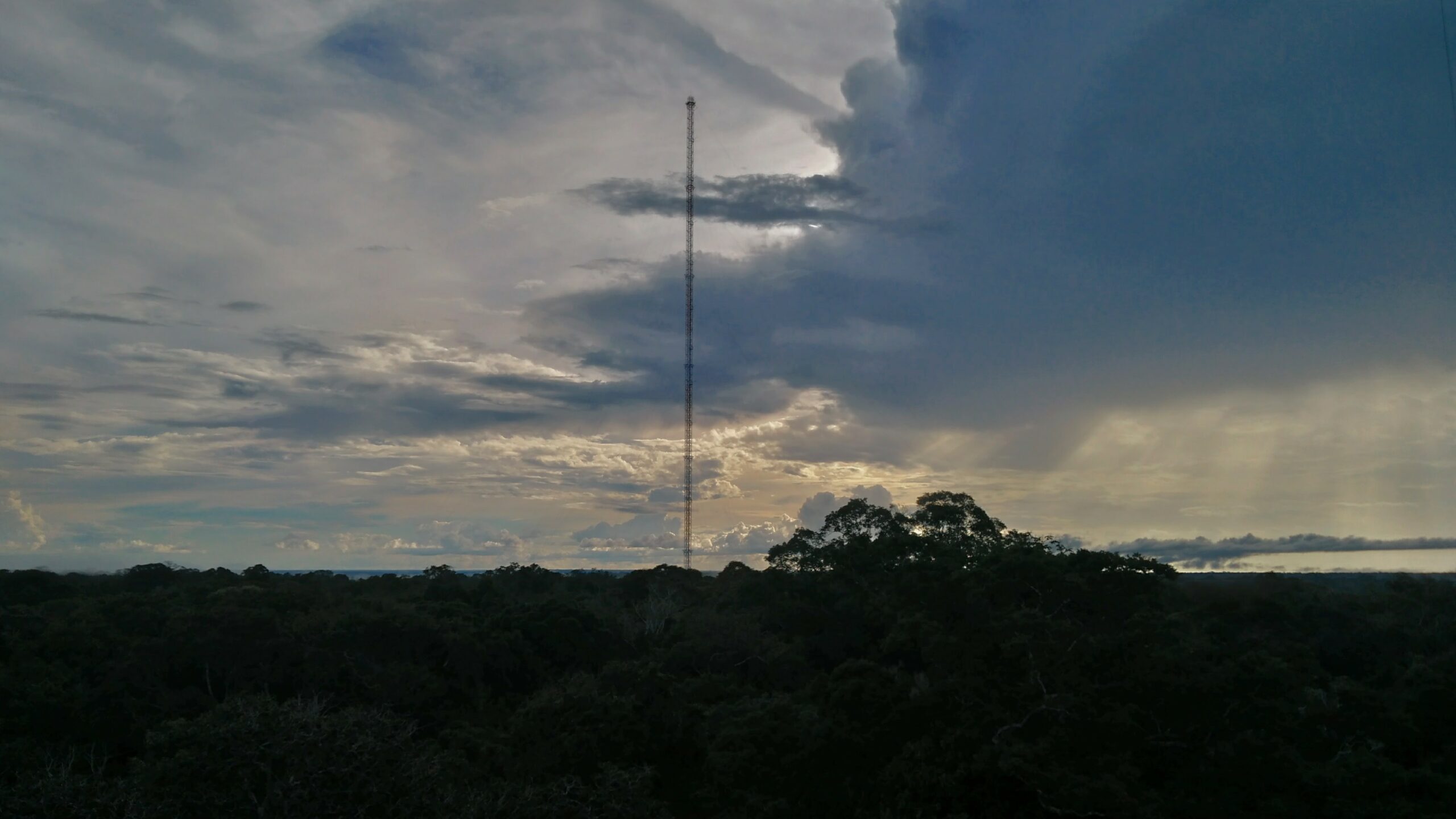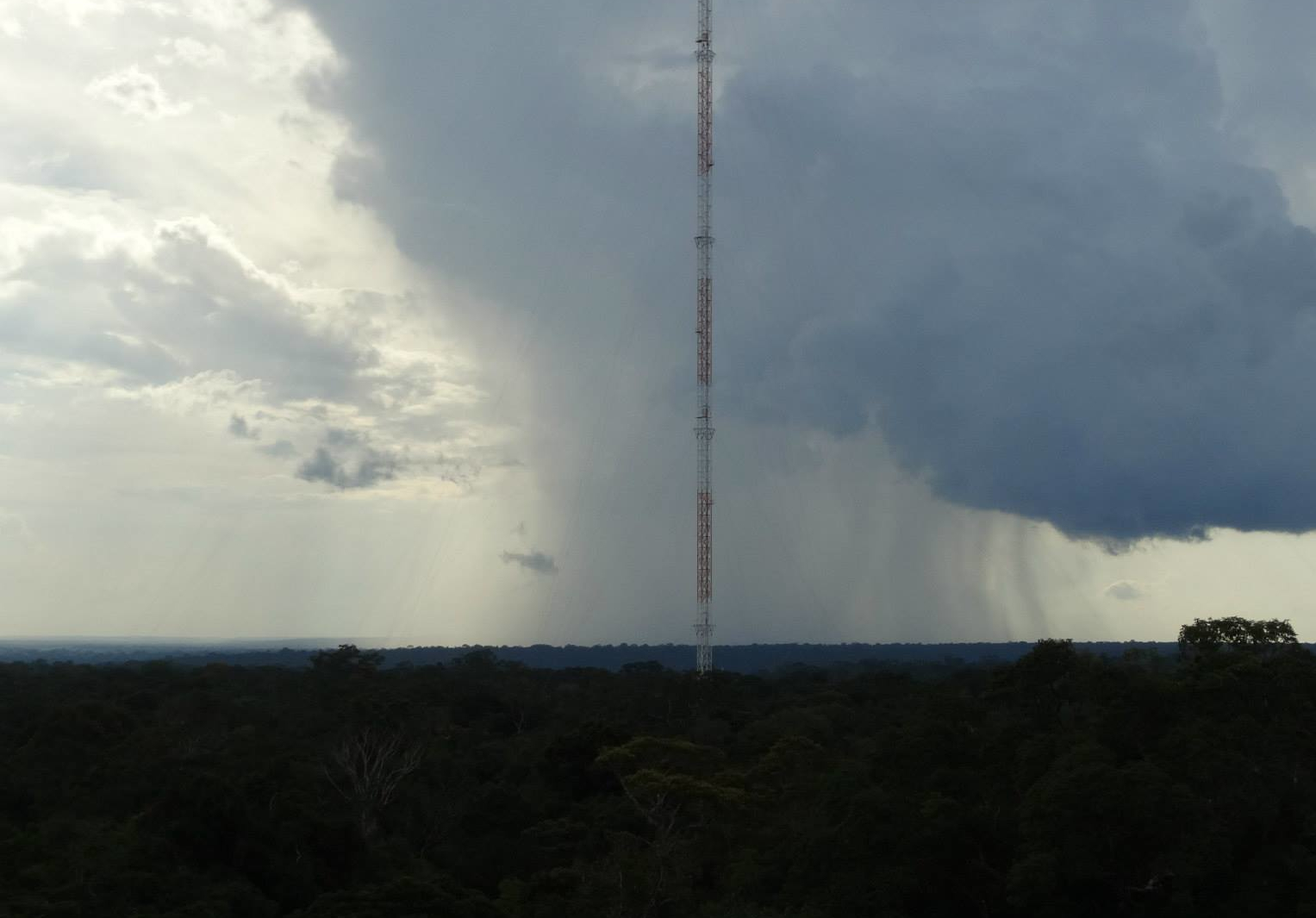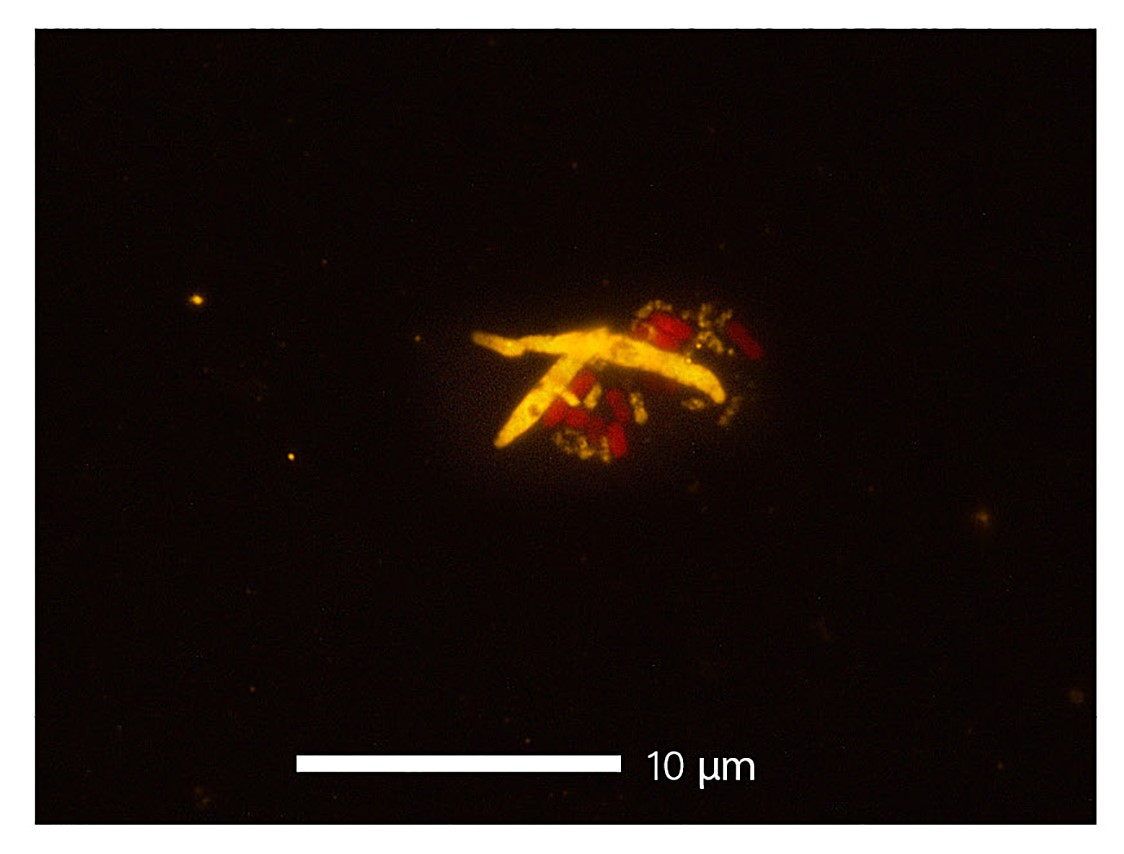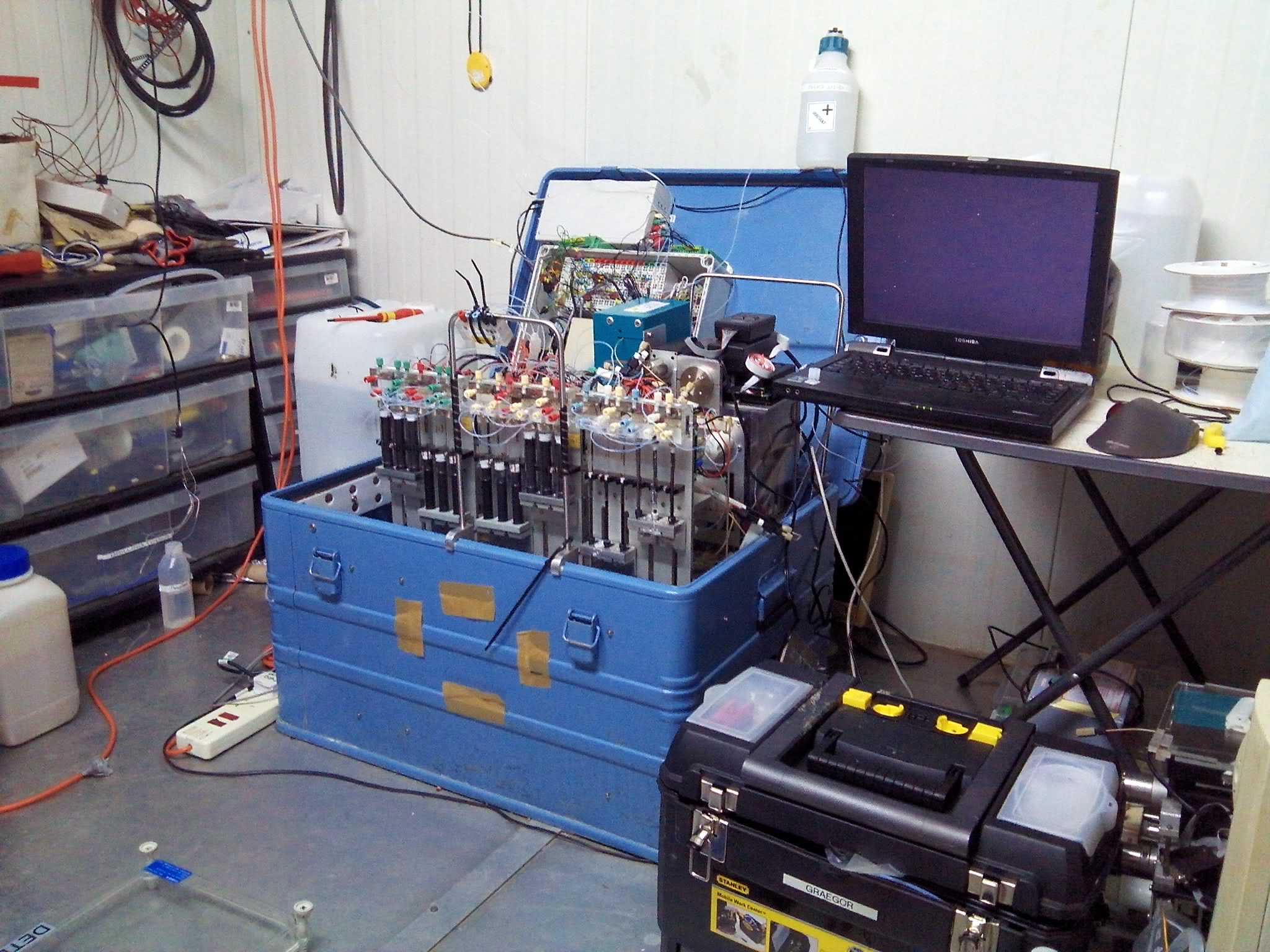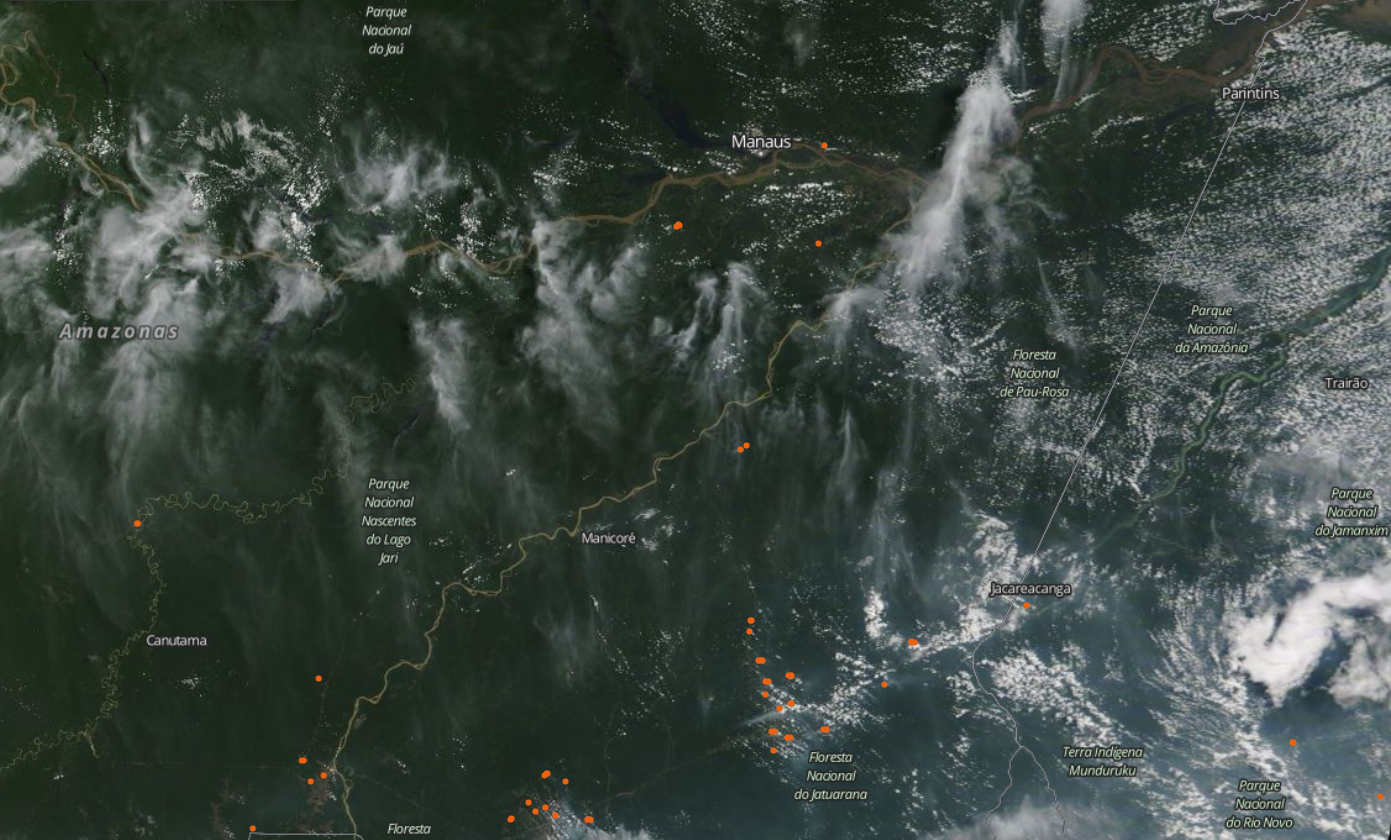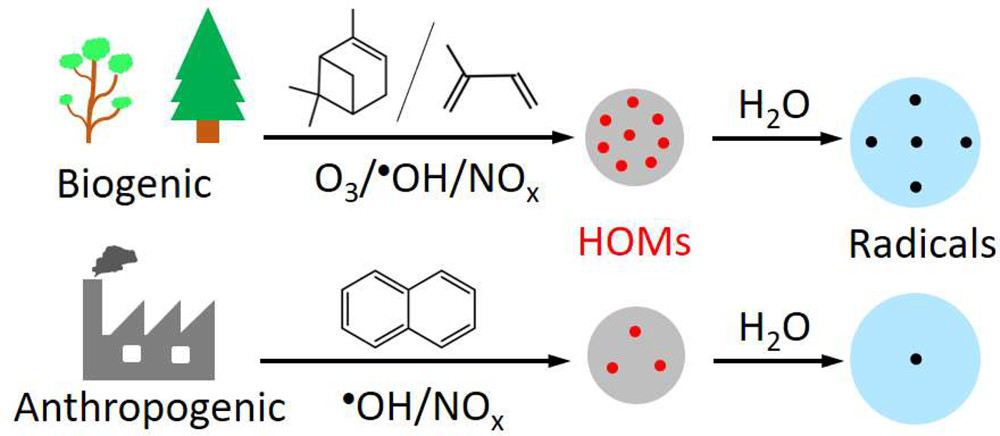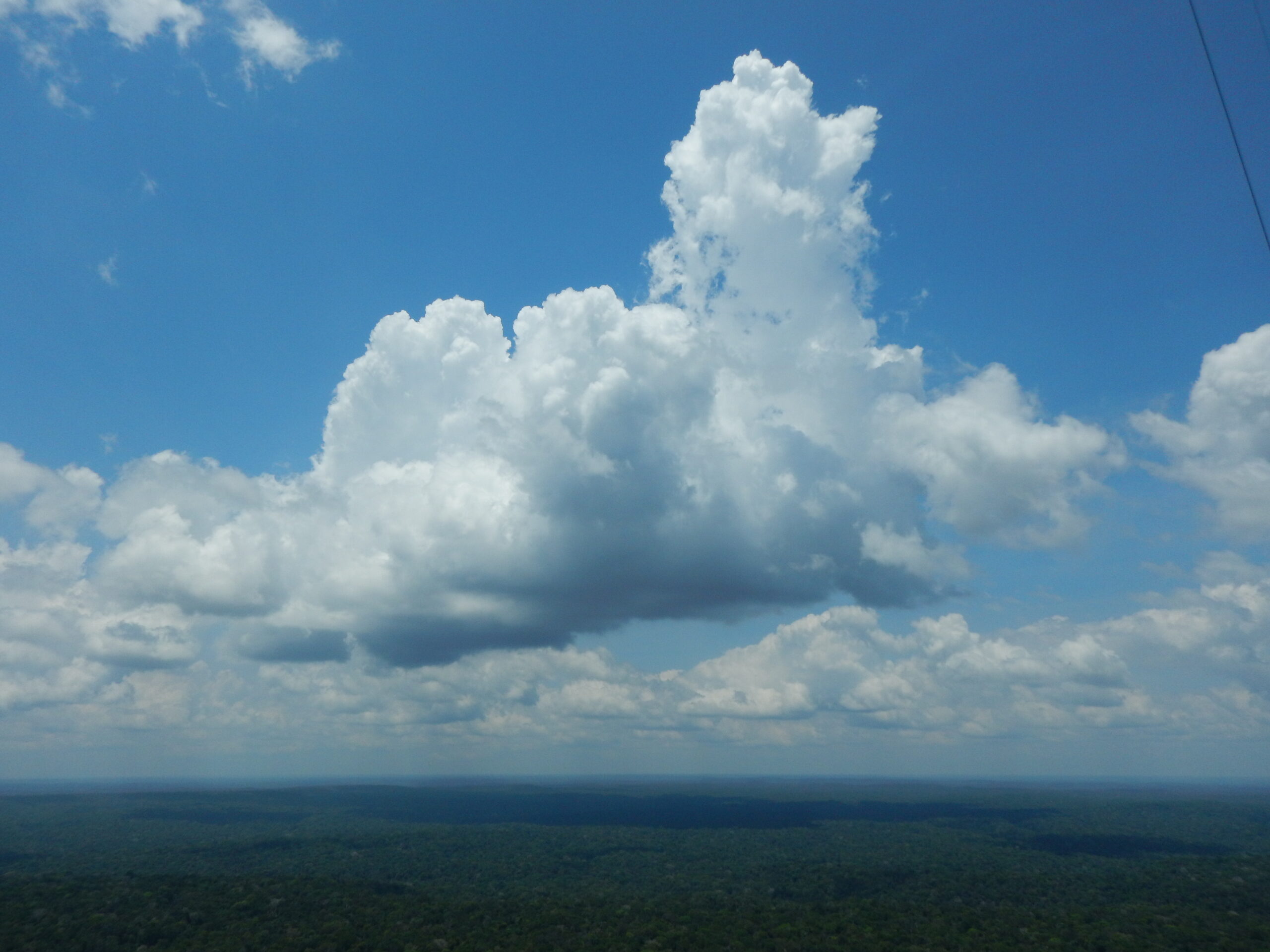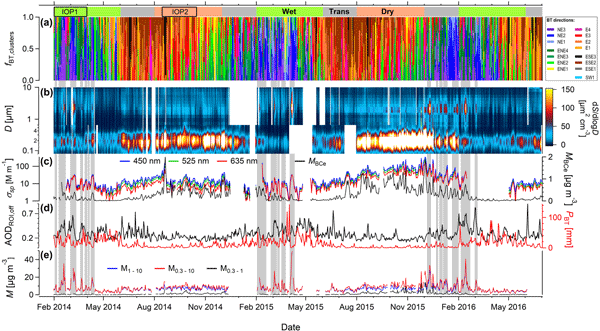You have probably heard a lot about air pollution recently, be it because of the massive wildfires in California, smog in India or the diesel emission scandal in Germany. So let’s look into air pollution in the Amazon. Most air pollutants are actually aerosols. Identifying these aerosols and their chemical composition can help us understand where they come from and to what extent certain regions are affected by air pollutions. That is exactly what Li Wu and co-authors did in their new study in the Amazon rainforest.
They collected and analyzed aerosols in two locations: the city of Manaus, a large urban area in Brazil, and the ATTO site in the heart of the forest. The samples were collected during the wet season when ATTO is mainly influenced by air masses from the Atlantic and is located upwind from Manaus. And indeed they found that at ATTO the aerosols are mostly of organic origin, emitted by the forest itself. Additionally, they could identify mineral dust and sea-salt particles. In contrast, they frequently found soot, fly ash and particles containing heavy metals in the samples in Manaus. These are most likely produced by human activities. The good news is that such anthropogenic particles are still largely absent from the atmosphere over the rainforest, showing us that pristine wilderness regions do still exist. That is, at least during the wet season when the winds blow in the “right” direction.
The scientists published the study in Atmospheric Chemistry and Physics (ACP) and is available Open Access here.
Similar articles
More soot particles enter the central Amazon rainforest from brush fires in Africa than from regional fires at certain times.
In a new study, Marco A. Franco and his colleagues analyzed when and under what conditions aerosols grow to a size relevant for cloud formation. Such growth events are relatively rare in the Amazon rainforest and follow and pronounced diurnal and seasonal cycles. The majority take place during the daytime, and during the wet season. But the team also discovered a few remarkable exceptions.
It is long known that aerosols, directly and indirectly, affect clouds and precipitation. But very few studies have focused on the opposite: the question of how clouds modify aerosol properties. Therefore, Luiz Machado and his colleagues looked into this process at ATTO. Specifically, they studied how weather events influenced the size distribution of aerosol particles.
The Amazon rain forest plays a major role in global hydrological cycling. Biogenic aerosols, such as pollen, fungi, and spores likely influence the formation of clouds and precipitation. However, there are many different types of bioaerosols. The particles vary considerably in size, morphology, mixing state, as well as behavior like hygroscopicity (how much particles attract water) and metabolic activity. Therefore, it is likely that not only the amount of bioaerosols affects the hydrological cycle, but also the types of aerosols present.
Ramsay et al. measured inorganic trace gases such as ammonia and nitric acid and aerosols in the dry season at ATTO. They are to serve as baseline values for their concentration and fluxes in the atmosphere and are a first step in deciphering exchange processes of inorganic trace gases between the Amazon rainforest and the atmosphere.
Soot and other aerosols from biomass burning can influence regional and global weather and climate. Lixia Liu and her colleagues studied how this affects the Amazon Basin during the dry season. While there are many different interactions between biomass burning aerosols and climate, they found that they overall lead to fewer and weaker rain events in the Amazon rainforest.
In a new study, Dr. Haijie Tong and co-authors studied a subset of PM2.5, the so-called highly oxygenated molecules (HOMs) and its relationship with radical yield and aerosol oxidative potential. They analyzed fine particulate matter in the air in multiple locations. This including the highly polluted megacity Bejing and in the pristine rainforest at ATTO. They wanted to get insights into the chemical characteristic and evolutions of these HOM particles. In particular, they wanted to find out more about the potential of HOMs to form free radicals. These are highly reactive species with unpaired electrons.
We hear a lot about particulate matter these days, mostly in the context of air pollution in inner cities. But what about particulate matter in the Amazon rainforest? Well, the short answer is that particulate matter is present in the air above the Amazon, too. And although its concentrations are lower than those in large cities, urbanization and deforestation fires have a significant impact. To find out what that impact exactly is, was the aim of a new study by Suzane de Sá and co-authors.
Mira Pöhlker and her team continuously measured aerosols and their properties in the atmosphere at the 80 m tower at ATTO, thereby created the first such long-term record in the Amazon. They analyzed the data in two subsequent paper. The second was now published in ACP.
Moran-Zuloaga et al. analyzed the coarse fraction of aerosols every 5 minutes for over 3 years at ATTO. They found that the composition remains fairly constant throughout the year, except for a short period in the wet season when Saharan dust occurs regularly. They published their results in ACP.




